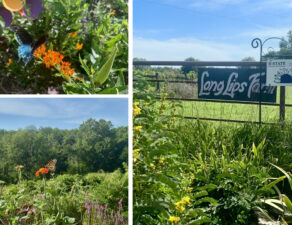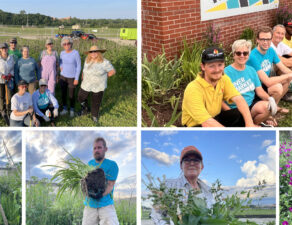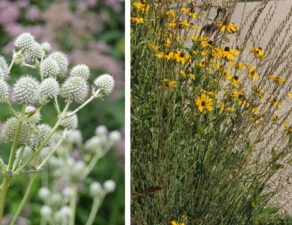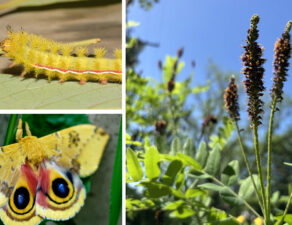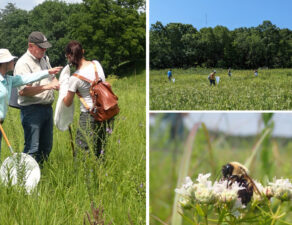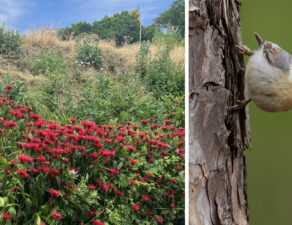
Text and Photos by Tom Schroeder
You cannot really know the native plants in the garden unless you know the creatures closely associated with them. In addition to the birds, bees and butterflies that visit the flowers, you will attract some of the most beautiful flies. OK, the image that probably just formed in your brain was the common house fly buzzing around your head, annoying you and grossing you out. Keep mind there are about 149,998 other fly species that are not the house fly. Some that visit the flowers of native plants are attractive and live very interesting and beneficial life cycles. They are also important pollinators in natural areas and gardens. They do not buzz around your head and annoy you but are only interested in visiting your flowers for nectar and pollen.
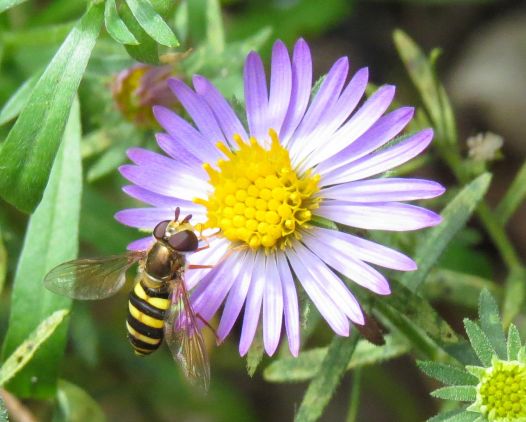
The most common fly in the garden is the Syrphid or Flower Fly. They are bee and wasp mimics. Being a mimic reduces their chances of predation. They can range from the size of a rice grain to the size of a bumblebee. There are many different species all with their own unique color patterns. Syrphid Flies visit flowers from April to November but are easily confused with bees and wasps. Look for their goggle-like eyes and short antennae. The adults seek pollen and nectar from flowers. Their grub-like larva feed on aphids. One larva can eat up to 50 aphids a day. Just think what a large number of larva could do to help your plants.
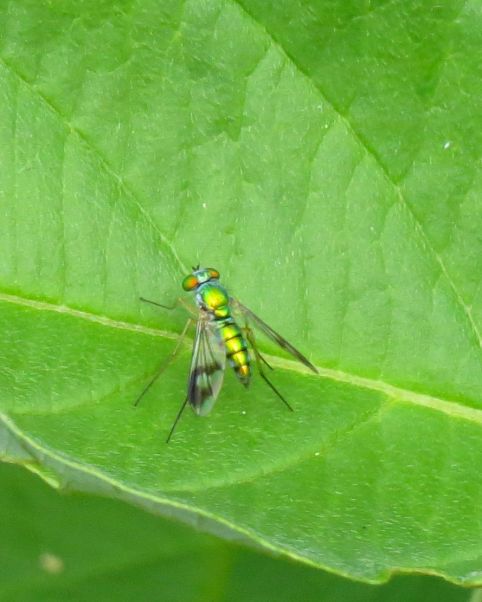
A fly that is easy to recognize is the Long-Legged Fly. They have a metallic green body and, like their name says, very long legs. The male fly will show off his long legs to a female to court her. The adults eat Thrips, Aphids, and Spider Mites that attack your garden plants. These are good flies to have hanging around the garden.
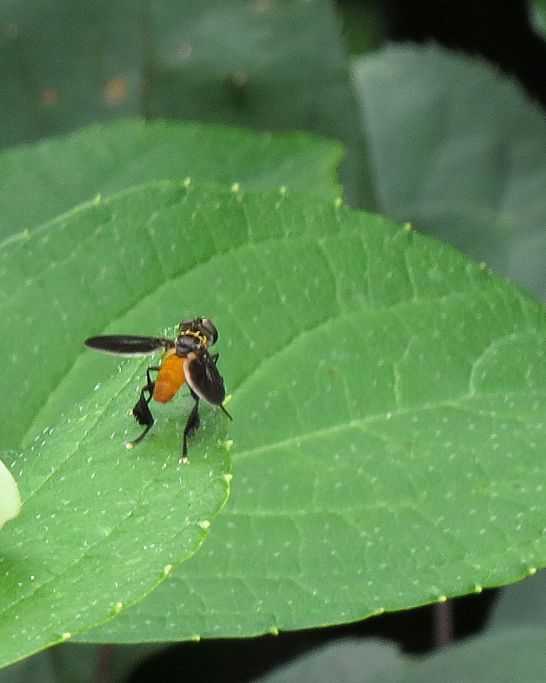
Another fly that is easy to recognize is the Feather-Legged Fly. These flies have orange bodies and a feather-like growth on their hind legs. The adults feed on flower nectar. They lay their eggs on the bodies of Squash Bugs and Stink Bugs. The larva are parasitoids. The larva consumes the host bug while developing. If you hate Squash Bugs you will like Feather-Legged Flies.
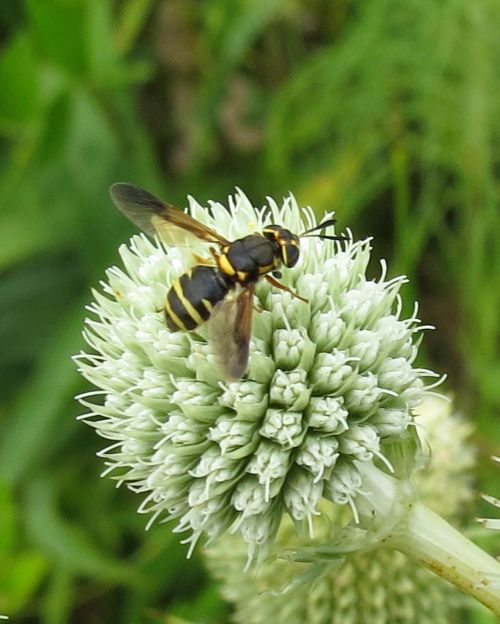
Another bee and wasp mimic is the Big-Headed Fly. They look like Syrphid Flies but have a totally different life cycle. The adults will visit flowers for nectar and to wait for prey. Depending on the species, they lay their eggs on wasps, bees, ants or cockroaches. The larva are parasitoids, developing inside the host bug.
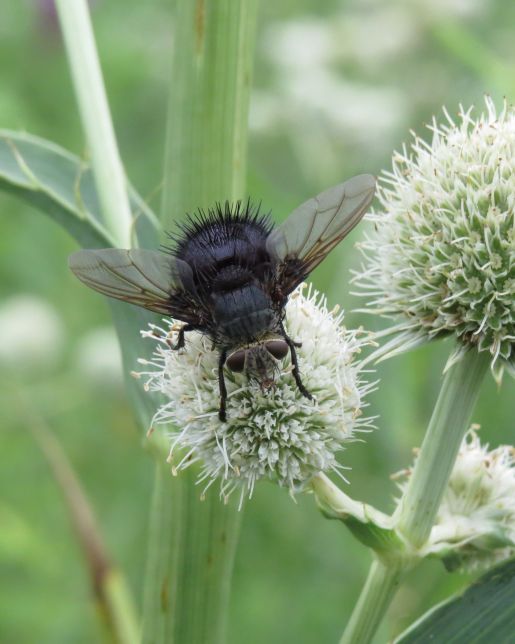
So, we have the Long-Legged, Feather-Legged and Big-Headed Fly. I would have to call the Tachinid Fly the “Bristle Butt” Fly. Most of the species have noticeable bristles on their abdomens. The adults feed on flower nectar. Plant eating insects make up the majority of the hosts of this fly’s larva. Some species lay their eggs on plant leaves and when the egg is eaten by a caterpillar it hatches. Other species lay the egg directly on the bug. Tachinid Flies can decrease the population of Army Worms, Saw Fly Larva, Squash Bugs and Cabbage Loppers in the garden.
These interesting beneficial flies are attracted to a variety of flowers that have their nectar easily accessible. The flies use their short sponge-like mouth parts to consume nectar and pollen. Recommended native plants are Spiderwort, Yarrow, Sunflower, Echinacea, Aster, Rattlesnake Master, Blazing Star, Rudbeckia, and Helenium.
The flies overwinter on plant stems or under plant debris. If you clean up your garden in the fall and haul away the debris, you are removing next year’s population of beneficial creatures. If you must remove the debris from the garden in the fall, place it at the back of the garden or under nearby bushes so next year’s generation of insects can overwinter.
Minimize or do not use pesticides. The ones you use to kill the bad bugs will also kill the good bugs. By encouraging these beneficial insects, you will decrease the population of problem insects.
This summer spend some time observing these fascinating fly species visiting the flowers. By planting native plant species, you can support a wide variety of native insects. Remember, not all flies are annoying or ugly.
